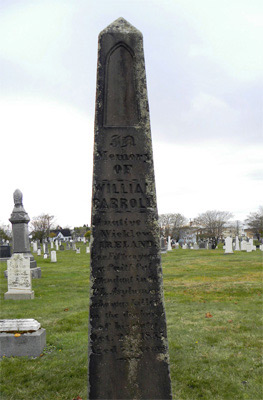Death of William Carroll
1855
 During the 19th century people who were associated with acts of violence were committed to the early mental hospitals, which were thought to be a more humane manner of dealing with ‘diseases of the mind’ than local jails and penitentiaries.
During the 19th century people who were associated with acts of violence were committed to the early mental hospitals, which were thought to be a more humane manner of dealing with ‘diseases of the mind’ than local jails and penitentiaries.
At times these institutions were dangerous for both patients and staff. Work began the new Provincial Lunatic Asylum, a large mental hospital at Reversing Falls, near Saint John in the second half of the 1840s. Over the next few decades the facility, which housed both paying and non-paying patients, add buildings and new wings. Like any large institution, it had its share of controversies.
The era before the use of mood-altering medication to treat mental illness, responses to threatening or disorderly behaviour usually involved some form of physical incapacitation. One of the best-known cases involving the asylum was that of Mary Huestis Pengilly who was admitted to the institution at the request of her sons in 1883. She kept a diary, which was later published after her release, which indicated some of the harsh treatment suffered by patients. Its opening entry was “They will not let me go home.”
‘Lunatic asylums’ or mental hospitals could be dangerous places for employees. William Carroll was born in Wicklow County, Ireland in the late 1700s. In 1840 he started working as an attendant. In 1855 Carroll, together with his co-worker Barry Mills, was attacked by a mentally-ill patient carrying an axe. Both men died.
The patient was not placed on trial. Carroll's elaborate grave marker is found in Cedar Hill cemetery, west Saint John, close to the site of the former mental hospital, which is now a park overlooking Reversing Falls. Note that Carroll was 72 years old when he was killed.
